|
Under the patronage of the Mauryas and Satvahanas,
Buddhism flourished in Karnataka. Gradually Hinduism assimilated
most of the teachings of Buddha and Buddhism lost its distinct
identity. However, today, there are still numerous places of
Buddhist interest spread across the State.
Our destination, Aihole,
is today an insignificant village in Bijapur district of north
Karnataka and reaching it involves an obstacle course: an
excruciatingly slow passenger train to Badami, an hour’s wait
for a bus and jostling to get on. The vehicle rattles across the
interminable hot plains and flat scrub of north Karnataka. To do
just 46 kilometers from Badami to Aihole, the bus needs four tedious
hours. But alight at Aihole and the travails are forgotten! For
Aihole is one of the most remarkable temple sites in the country with
one hundred and twenty temples, big and small, in different styles,
all in a small village.
There is scope for tourism in each tiny village. Hence, it should be richly developed.
https://www.youtube.com/watch?v=pYyiRLUvmZs
https://www.youtube.com/watch?v=pYyiRLUvmZs
There is scope for tourism in each tiny village. Hence, it should be richly developed.
Aihole
Karnataka Tourism
Published on Feb 22, 2012
Category
Travel & Events
Music in this video
Learn more
Listen ad-free with YouTube Premium
Song
Sweet Smoke
Artist
Jeevan Anandasivam, PRS|Manjeet Amar, PRS
Album
KPMWM 12 North India -ed
Licensed to YouTube by
AdRev Masters Admin (on behalf of APM in North America and EMI
Production Music for Rest of World|KPM World Music Series|KPM Music Ltd)
Art historians say Aihole
was a workshop for temple architects and sculptors patronized by
early Chalukyan monarchs. Here are some of the earliest structural
temples in stone in the country, dating from 450 AD and, among them,
is one of the four Buddhist shrines in Karnataka. So we make our way
to Aihole’s hillock, Meguti, to the rock cut Buddhist shrine.
It is of special interest to us because it is the most important
surviving Buddhist temple in Karnataka.
The Chaitya, a double
stories structure, is half structural and half excavated in rock.
The sanctum sanctorum is in the upper storey. It has a rectangular
verandah of 8.78 m x 2.15 m. In the centre of the Verandah’s
ceiling is a relief of Buddha in preaching posture. Of the three
Buddha sculptures at Aihole, this is the best preserved and is 61cm
in Height. He is seated on the padmapitha in the
satvaparyankasana, that is, his right hand is placed against
his chest in the vyakhyan mudra while the left is placed on
the right foot with the palm facing upwards. His right shoulder and
right breast are uncovered. There is a triple umbrella above him and
his attendants are nearby.
Chaitya:
A chaitya is a Buddhist shrine or prayer hall with a stupa at one end.
In modern texts on Indian architecture, the term chaitya-griha is often
used to denote an assembly or prayer hall that houses a stupa.
Chaitya
is a religious term, while stupa is an architectural term for a mound
containing a relic of the Buddha and later on of leading Buddhist saints
Definition of Chaitya from all online and printed dictionaries, photos and videos about Chaitya
Buddhist Schools of Art - Part 1

Published on Feb 15, 2013
This
topic explains the Buddhist Schools of arts- The Mauryan School of Art,
The Sunga School of Art, The Mathura or Kushana School of Art and The
Gandhara School of Art.
This is a product of Mexus Education Pvt. Ltd., an education innovations
company based in Mumbai, India.
http://www.mexuseducation.com, http://www.ikenstore.in
Buddhism was founded in
north India in about 500 BC when Siddharth Gautama, born a prince,
achieved awakenment. It is widely held that the religion first
emerged during Mauryan times when there was a missionary zeal. Parts
of Karnataka were subject to the rule of the Mauryas. Chandragupta
Maurya’s son Bindusara (298-273 BC) and Bindusara’s son
Asoka (269-232 BC) caused some of his edicts to be put up here.
Asoka’s grandson Samprati Chandragupta is believed to have come
to Sravanbelagola where he spent his last years. Eleven Asokan
edicts, four in Bellary district, three in Raichur district and three
others in Chitradurga district bear witness to the Mauryan presence
in Karnataka.
Shravanabelagola has two hills, Chandragiri and Vindhyagiri. Acharya Bhadrabahu and his pupil Chandragupta Maurya are believed to have meditated there. Chandragupta Basadi, which was dedicated to Chandragupta Maurya, was originally built there by Ashoka in the third century BC. Chandragiri also has memorials to numerous monks and Śrāvakas who have meditated there since the fifth century AD, including the last king of the Rashtrakuta dynasty of Manyakheta. Chandragiri also has a famous temple built by Chavundaraya.Inscriptions in Prakrit, dating from 981 AD. The inscription praises the king who funded the effort and his general, Chavundaraya.
Some hold the view,
however, that such rock edicts merely prove that Karnataka was within
the jurisdiction of Mauryan kings, but not necessarily the advent of
Buddhism here. The Sinhalese chronicles, Mahavamsa and
Dipavamsa, mention Mangaliputtatissa, a contemporary of Asoka
and reputed to be the emperor’s teacher and mentor. He had sent
missionaries to Mahshaka (southern region of Karnataka) under
Mahadeva, and to Banavasi (the heart of Karnataka) under Rakkhita, to
preach the gospel. That would firmly indicate Buddhist prevalence in
Karnataka.
Indian History and Architecture
Navigating Indian History through its Architecture
Banavasi – The First Kannada Capital
Chapter I
Past References and Political History
Banavasi holds a very important position
in the history of Karnataka. It enjoys the reputation of being the
capital town of the first indigenous Kannada dynasty, the Kadambas.
Though it rose to the position of a capital town during the Kadambas,
however it was already playing the same role during the rule of the
Chutus who were a feudatories under the Satavahanas.
Political History – If we exclude the pre-historic period, then
Banavasi might emerge as the oldest town of Karnataka, probably
contemporary to Shravanabelagola. However, its antiquity before the
Mauryas is still not established. One major reason for this missing
piece of information is inadequate number of excavations carried out at
this site.
With the distribution of Ashoka’s inscription in
southern India, it can be safely assumed that Banavasi was under
Ashoka’s dominion. After the disintegration of the Mauryas, there were
different regional powers in north and south India and Banavasi came
under the Satavahanas. Nasik cave inscription of the Satavahana king
Gautamiputra Satakarni was issued from the victorious camp of Banavasi.
Satavahana activities around the Banavasi region is also attested from
various coins and a solo Satavahana memorial inscription found here.
The Chutus ruled after the Satavahanas and Banavasi became their
capital. Though there are not many inscriptions of this dynasty, however
most of those are found in and around Banavasi region only. Many of
their coins have also been discovered here. They were prominently
Buddhists as evident from their inscriptions. After the Chutus, Banavasi
became the celebrated capital of the first indigenous Kannada dynasty,
the Kadambas. Though it was their capital city, however there is only
one Kadamba inscription found here.
While the power of the
Kadambas was on decline, an another south Indian dynasty, the Badami
Chalukyas, was on the rise. Chalukya inscriptions mention defeat of the
Kadambas in the hands of the Chalukya king Kirtivarman I. However it
seems that he was not able to conquer Banavasi as this victory is
attributed to his son, Pulakesi II. In his Aihole prashashti, it is
mentioned that Banavasi appeared to be a water-fort (Jala-durga) due to
its being surrounded by river Varada on three sides.
Since then,
Banavasi remained as a province under the Badami Chalukyas. It would
have been an important province as at one point of time it was being
governed by the brother-in-law of the Chalukya king Vijayaditya. The
Shiggaon plate (Epigraphia Indica vol XXXII) mentions that Vijayaditya
visited Banavasi to see his brother-in-law, the Alupa king Chitravahana
in 708 CE. Chitravahana’s father, Gunasagara, was the first Alupa king
who was made the governor of the Kadamba-mandala by the Chalukya king
Vikramaditya I as evident from Kigga inscription (Epigraphia Carnatica
vol VI).
Though no Rashtrakuta inscription has been found in
Banavasi yet, from various inscriptions it is clear that it was under
the Rashtrakutas, being governed by their feudatories. Shrinivas Ritti
believes that under the Rashtrakuta, the Banavasi region was extended
quite considerably and became Banavasi-12000, comprising of 12000
villages. Marakkarasa family was the first one to govern Banavasi under
the Rashtrakutas. After them, it was Chalukya Rajaditya and Chellaketana
families who governed this region.
With the Kalyana Chalukyas
taking over most of the Karnataka into their control, Banavasi also came
under them. By then Banavasi-12000 had gained a reputation of an
important and coveted place. It was hence administered by important
feudatories under the Kalyana Chalukyas.
Kadambas of Hangal
administered Banavasi-12000 under the Kalyana Chalukyas. They continued
their rule even after the fall of the Kalyana Chalukyas. With the fall
of the Kalyana Chalukyas, Karnataka went into the hands of two powerful
dynasties, the northern part to the Sevunas and the southern to the
Hoysalas. Both these dynasties tried their best to prove their supremacy
but none succeeded.
Due to its strategic location, being
situated at the border of the Hoysala and Sevuna territories, Banavasi
became the point of tussle between these two dynasties. Both had their
small stints over Banavasi however it did not remain with them for long.
Hoysala Vishnuvardhana conquered Banavasi in 1135 CE for a small time
but later driven out by the Kadamba Mallikarjuna. Sevuna Singhana II
also ruled over Banavasi in about 1215 CE.
Banavasi was with the
Kadambas, as the feudatories of the Sevunas, when the Vijayanagara
empire rose. Later it moved to Sode chiefs and from them to Hyder Ali.
With the defeat of Tipu Sultan, Banavasi along with other major portion
of Karnataka came under the British rule in 1799 CE.

In point of fact,
Buddhist doctrine held sway in Karnataka even before Asoka’s
time. Mahisasana, a form of Hinayana Buddhism, spread after the
first convention of Buddhism in Rajgraha (477 BC) to Avanti, and to
areas south of it to what are today’s Andhra Pradesh, Karnataka,
Tamil Nadu and Kerala. Thus, while Asoka accepted Buddhism only in
268 BC, Buddhism was prevalent in Karnataka two centuries prior to
the Mauryan monarch.
Early on, Buddhism
separated into Sthavarvad (Hinayana) and Mahasanghikvad (Mahayana)
which developed into Mahisasana. This branch stretched upto Banavasi
from 5th century BC to 3rd century BC, that is,
after the very first Buddhist convention in 477 BC and certainly long
before Asoka.
Why then, are there are
no Buddhist relics found from those centuries before Asoka? The
answer is quite simple. There was no idol worship in Buddhism.
There had been no sculptures, carvings nor erection of stupas and
inscriptions before the Asokan stupas at Sanchi and Sarnath. Prior
to them, there were only earthern stupas which could not survive the
ravages of time. There is one exception, however, excavations near
Banavasi in 1971 revealed stupas and bricks that have been dated to
the 2nd and 3rd century BC. A Buddhist
deepasthambha (lamp post) of those times was found at the
village Togarsi near Banavasi. By and large, in Karnataka, the
Hnayana Buddhism that prevailed did not deify Buddha but looked upon
him at human level, as perfect man. Paucity of actual remnants
before Asoka’s time is thus explained.
The Mauryan inscriptions
do not merely indicate the empire’s boundary. They also assert
that Buddhism flourished there because the very purpose of Asoka’s
edicts was to spread universal message to the masses. Buddhism duly
spread and flourished. In sum, the Mauryan was undoubtedly the golden
age of Buddhism.
The Satavahanas were
successors to the Mauryas and ruled in Banavasi, as is evident from
the Nasik inscription of Gautamiputra Satakarni and the copper plates
from Hirehadagali. There is a Prakrit inscription belonging to the
second century on the stone Naga effigy fund at the Madhukesvara
temple, which refers to the fact that Siva-skandanagar-sri, daughter
of Satakarni of Chutukula, the king of Vaijayantipura (i.e. Banavasi)
was responsible for the installation of that Naga effigy, and the
Vihara. A copper plate inscription of 338 AD likens a Banavasi king
to a bodhisattva (reincarnation) in his great compassion towards all
living beings (praninam parama karnikataya bodhisattvo pamanasya).
From 30 BC to the second
century AD, the Satavahanas ruled from Pratisthana (modern day
Paithan) on the bank of Godavari river at Aurangabad. Their support
to Buddhism is evident from Pliny (1st century AD) whose
account mentions Prakrit inscription of Gvinaya Pitaka, referring to
Setakannika, which shows that Buddhism was flourishing in Karnataka.
Mahavagga, a composer after Asoka’s time endorses this.
The Satvahanas may have
been a Karnataka dynasty, as Dharwad and Bellary districts are called
Shantavahani Hara (or Shantavahana region). Some of their kings were
called rulers of Kunthala, the old name for Karnataka. At Sannati
(Gulbarga district), as well as Vadgoan Madhavpur (near Belgaum) and
Brahmagiri (Chitradurga district), there are remains of monuments of
their period. The Uttara Kannada area of Banavasi has their
inscription at Vasan in Dharwad district, and there are remains of a
brick temple. The Chandravalli inscriptions that were unearthed in
1888, strongly suggest that worshipers of Buddha were here during the
early centuries of the Christian era. The leader coins of the
Satvahana kings bear the figure of a humped bull and on the other
side of the coins are the unmistakable emblems of the bodhi tree and
the chaitya (cairn). Small sculptures of Gandharva, a
Buddhist yaksha, are also found.
The earliest epigraphic
evidence in this regard (latter half of second century AD) is the
stone memorial inscribed in Prakrit. It is that of Vasistapura
Sivasiri Pulamari Rajana Mahadevi Sirijantamula, wife of a king of
Banavasi who constructed a stambha and a Vihara for the
Mahisasanas at Nagarjunakonnda.
Another chronicler,
Mahavamso, cites an important event. In the first century,
Dattagamini, King of Ceylon, built a vihara and 80000 bhikus
of Vanavasi had attended! Bhutpala, a merchant of Banavasi, was
responsible for carving the famed Buddhist cave at Karla where an
inscription says it was the best in the whole country.
It is at Sannati,
(Chitapur, taluk, Gulbarga district), on both banks of the river
Bhima, that many Buddhist stupas of the Satvahana times have been
found. It resembles Amravati and was the Buddhist centre of the
Satvahana period of pre-Christian era and is spread over a three
kilometer area. Fine sculptures can be seen all along and the
Buddhist ruins found there are in large numbers. They include
remnants of stupas, stone pottery for holy bones and ayaka stambha
which has symbolic representation of birth, parinishnishkramana,
enlightenment, preaching and nirvana (salvation) of Buddha.
Inscriptions in the Brahmi script contain names of those who gave
grants to sangharama, stupas and viharas. The words –
visiriputa sirisata mahasataraha – show the beginning of
the Christian era and reference to Banavasi is found. There are
stupas carved in stone, and another stupa (1st to 3rd
century AD) has Buddha’s feet.
The Sannatis
(feudatories) of Satvahanas, known as Mahabhojas, had then ruled the
Banavasi area. An inscriptions of that period says: “Nagamulida,
wife of Maharathi, daughter of the Mahabhoja, King of Banavasi,
mother of Khanda Nagashtak, constructed a cave residence at Kanheri
(near today’s Bombay) of Buddhist bhikus.”
After the Satavahanas,
Karnataka fell into the hands of the Pallavas of Kanchi and the
Chuttu Shatkarnis (who were feudatories of the Satavahanas) ruling
from Banavasi after the fall of the Satavahanas. Pallava domination
ended when two dynasties, the Kadambas of Banavasi and the Gangas of
Kolar (345 AD) held sway.
The Gangas, ruling from
Talakadu, followed the vedic religion but were tolerant towards
Buddhism. A Sanskrit copperplate (400 AD) issued by Padangala
Madhava (440-470 AD), a Ganga ruler, indicated land grants to a
Buddhist vihara (gangarajya madhava-sarmanah sasana
Buddha-sattvaya dattam). There were Buddhist viharas alive and
active and Buddhism was still powerful in the Ganga territory.
Like the Gangas, the
Kadambas were also tolerant towards Buddhism as epigraphic evidence
shows. The Kadamba capital was also Banavasi, (known as Vaijayanti,)
and their century was a prominent one for Buddhism in Karnataka.
Chinese traveller, Hieun Tsang, visited Banavasi in the 7th
century AD and saw 1000 sangharamas and three stupas. He
says: “By the side of the royal palace is a great sangharama
with 300 priests, all men of distinction. This convent has a great
vihara 100 in height.”
Recent excavations of the
site of Banavasi have given the remains of a Buddhist stupa. The
large apsidal structure is what remains and it was planned like a
dharma-chakra.
The Buddhist Chaitya
in front of which we stood at Aihole, is pre western Chalukyan and
indicates the influence of Mahayana. It was built around the 5th
century and is 25 feet high. We now make our way to Badami in
another rickety bus headed toward the erstwhile capital city of the
western Chalukyas in the 6th century. These rulers were
also associated with Buddhism and relics here have survived in the
shape of a Buddhist cave datable to the 6th century.
There is also a figure, identifiable as Padmapani, the Bodhisattva of
the same period. Hieun Tsang has stated that during the time of
Pulakesin II (642 AD) in Banavasi (or Konkanpura), there were 400
Sangharamas and 10000 followers of Buddhism.
In Gadag Taluk, Dharwad
district, at Dambal, there was a Buddhist centre as late as 12th
century. According to an inscription of 1095 AD, a temple of the
Buddhist deity Tara and a Buddhist vihara were built by 16
merchants during the reign of Lakshmidevi, queen of Vikramaditya VI.
Another temple of Tara, built at Dambal was by Sethi Sangarmaya of
Lokkigundi. Karnataka was indeed the place where the worship of Tara
gained ground. Tara became celebrated in Mahayana Buddhism
(especially Mantrayana) and acquired popularity as the mother of the
Buddhas and bodhisattvas, as the power of enlightenment and as the
consort of the bodhisattva Avalokitesvara, the patron divinity of the
Mantrayana sect in Nepal, Tibet, Mongolia and China.
Tara’s consort
Avalokitaesvara-bodhisattva is the Siva of the Saiva cult and there
is the correspondence of Tara with Durga. The association between
Tara and Avalokita (Lokesvara) is emphasized in Karnataka. In
Balligame, on the banks of the river Varada, a Buddhist Vihara known
as Jayanti Prabuddha Vihara was built in 1065 by Rupa Byhattaya, the
minister of the Chalukyan king Ahavamalla, and the deities that were
worshipped there were Tara Bhagavati, Kesava, Lokesvara and Buddha.
A Dambala inscription of 1095 AD begins with the customary invocation
namo buddhyana and goes go to describe at length the greatness
of Tara-bhagavati.
In Kolivada, Hubbali
taluk, Dharwad district, an icon of Tara has been discovered
belonging to about the thirteenth century and inscribed on the
pedestal of this icon are the words siddham om namo bhagavatayai
Aryatarayai, followed by the usual statement of the Buddha’s
teaching in brief.
The Vihara on Kadari Hill
in Mangalore (Dakshina Kannada) was an important site for Mahayana
Buddhism. There are three exquisite bronze statues, now in the
Manjunatha temple, one of which is of the Mahayana deity
Avalokitesvara bodhisattva (consort of Tara) called Lokesvara. The
other two bronzes are those of seated Buddha in contemplation.
Buddhism, which never became prevalent in Tulu-nadu, continued to
survive till the thirteenth century. It gradually got fused with
Saivite ideology.
Thereafter, it became
difficult for Buddhism to survive, especially as it lost its specific
identity and got merged with Saivism. The Buddhist legacy in
Karnataka survives in the teachings of Basaveswar or Basava, a
religious teacher who flourished in the 12th century.
There are estimated to be
75000 Buddhists in Karnataka of which Tibetans form a substantial
portion. Since the year 1900, the South India Buddhist Association
of Madras saw Buddhism taking roots and in Kolar Gold Fields near
Bangalore there is a Buddhist Vihara at Champion Reef. The Mahabodhi
Society of India founded a Buddhist Vihara in Bangalore in 1940 and
since 1956, Buddhism has got a fillip under Acharya Buddha Rakkkhita
who has published over 50 books and founded an institute, a
vidyapeeth and a hospital. Very much in evidence are the four
Tibetan settlements of Karnataka, at Bailkuppe (near Mysore), Mundgod
(in north Kanara district), Cauvery Valley, and at Kollegal. The
most important Tibetan Buddhist monasteries are Thegchay Ling and
Namgoling, both at Bailkuppe.
|








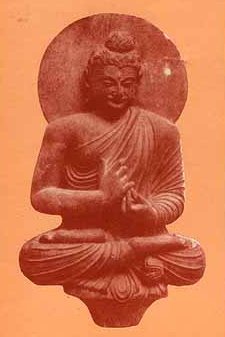

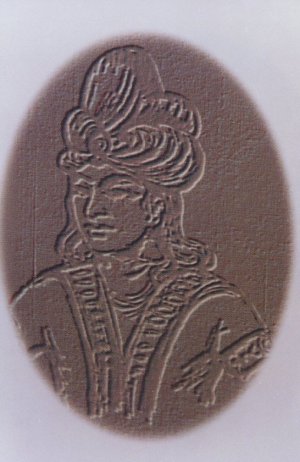




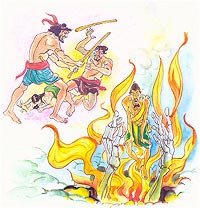
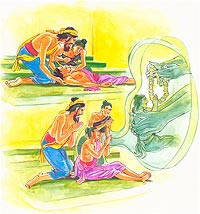
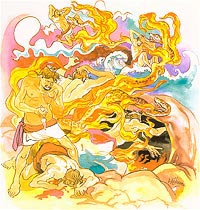
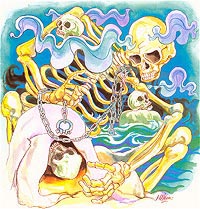

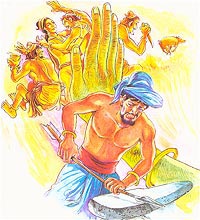
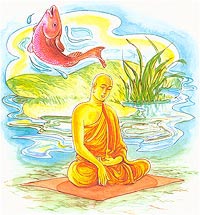

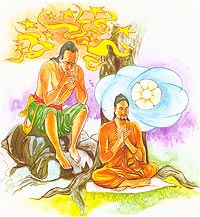
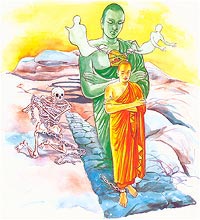
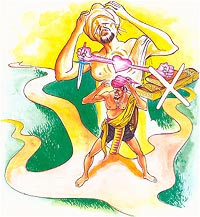
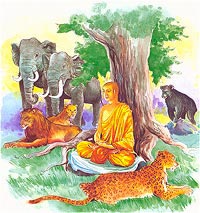

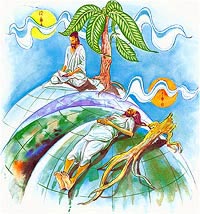



 Online and Offline Tipiṭaka Law Research & Practice University
in
112 CLASSICAL LANGUAGES
Online and Offline Tipiṭaka Law Research & Practice University
in
112 CLASSICAL LANGUAGES 





